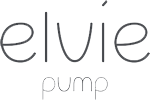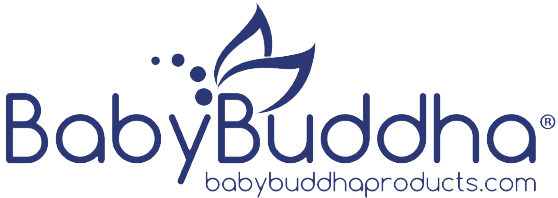Comfortable Breastfeeding Positions You Can Try

The first few days of feeding your baby can feel deeply personal, filled with tender moments, unexpected shifts, and little adjustments you make along the way. You’re still recovering, learning your baby’s cues, and figuring out how to make it all work.
So if you’ve found yourself wondering,
“Is there a more comfortable way to do this?”. This guide is here to offer gentle support.
Take a deep breath, you don’t have to have it all figured out. We have listed a few soothing breastfeeding techniques to bring more ease, connection, and comfort to your feeding journey.
Key Takeaways:
-
- Explore 15 breastfeeding positions for comfort from newborn to toddler stages.
- Positions like Football Hold, Laid-Back, and Side-Lying address latch issues and recovery.
- Learn tips for breastfeeding, including recognizing hunger cues and effective burping.
- Address concerns like milk supply, nipple pain, and balancing with pumping/formula feeding.
- Embrace a calm, patient approach to foster connection and well-being for both you and your baby.
Cradle, Cuddle, and Connect: 15 Nursing Positions That Support You Both
In those quiet moments, when it’s just you and your baby, how you hold each other can shape the whole experience. Maybe your arms are sore, the latch isn’t quite right, or you’re just feeling a little unsure. That’s okay.
This section gently explores breastfeeding techniques and positions that many moms find helpful, whether you’re nursing in bed during a night feed or snuggled in your favorite chair. It’s not about getting it perfect, but finding what feels a bit more natural, comforting, and right for you.
1. Laid-Back (Biological Nurturing) Position
It’s best for: First feeds after birth, skin-to-skin moments
Getting into the position: You lean back, baby rests on your chest, and instinct takes over. It’s unhurried, cozy, and calming, like melting into the moment.
How it helps: Gravity and the baby’s natural reflexes guide them to latch. It encourages bonding and can reduce stress for both of you.
2. Cross-Cradle Hold
It’s best for: Newborns or early latching support.
Getting into the position: Sit in a comfortable, upright position with good back support. Your forearm supports their back and shoulders, while your hand cradles the base of their head and neck, giving you more control over guiding them to the breast. It’s a secure, supportive hold that can make latch-on easier when you’re just starting.
How it helps: It gives you a better view of your baby’s latch, helping them attach more deeply. It’s especially helpful if you’re still figuring things out together.
3. Cradle Hold
It’s best for: Older babies who have already learned to latch well
Getting into the position: Place your baby’s head in the crook of your elbow, with their body lying across your chest and supported by your forearm. Their tummy should be facing yours, creating a snug, cradled hold. This position feels natural and secure, like holding your baby in a warm, gentle hug.
How it helps: Once latching becomes easier, this position allows for eye contact and closeness while freeing up your other hand. It’s simple, comforting, and becomes second nature with time.
4. Football (Clutch) Hold
It’s best for: C-section recovery, twins, or when you need a bit more open space around your chest and tummy
Getting into the position: Imagine tucking your baby under your arm like a little football, with their feet pointing toward your back. Their body rests along your forearm, while your hand supports their neck and head. Use a firm pillow or nursing cushion at your side to help lift and support your baby at breast height.
How it helps: Offers excellent support and visibility, keeping pressure off your abdomen while giving baby a solid latch. This position keeps pressure off your belly, which can feel especially relieving if you’re recovering from surgery or simply need a bit more space.
5. Side-Lying Position
It’s best for: Night feeds, recovery days, or when you need rest
Getting into the position: You and your baby lie on your sides, facing each other, sharing a quiet, grounded moment. It’s soft, intimate, and restful, perfect for slow mornings or sleepy evenings.
How it helps: Reduces strain on your back, arms, and belly. Great for recovering from birth or simply conserving energy while still feeding.
6. Dangle Feeding
It’s best for: Relieving clogged ducts, easing engorgement, or when you need gravity’s help to fully drain the breast.
Getting into the position: You’re leaning over your baby so gravity does the work, perhaps on all fours on the bed or slightly leaned forward over them. It might feel a little awkward at first, but also surprisingly effective when you’re dealing with discomfort.
How it helps: Gravity supports deeper drainage of the breast, which can help loosen clogs and ease pressure from engorgement. Some mothers also find this position beneficial during forceful letdown ( letdown reflex is a natural physiological response triggered by the baby’s suckling that causes milk to flow from the milk ducts to the nipple, facilitating feeding ), as the upright angle can give their baby more control while drinking.
7. Double-Football Hold (for Twins)
It’s best for: Feeding twins at the same time
How to Hold Your Babies: Tuck one baby under each arm like a football, with their bodies supported along your forearms and their heads at breast level. Their feet should point toward your back, and their tummies should be facing up toward you. Use a supportive pillow or twin nursing cushion to help lift and stabilize both babies comfortably.
How it helps: Frees up your front and gives you control while supporting both babies safely and comfortably. Helps establish a tandem feeding rhythm that can save time and build a supply.
8. Reclining or Semi-Reclined Position
It’s best for: Tired days, post-birth rest, or relaxed skin-to-skin
Getting into the position: You’re lying back with your baby on your chest. It’s soft, grounding, and restful, almost like relaxing on the couch with your baby curled up on you.
How it helps: Encourages the baby’s instincts to find the breast and latch. Also reduces strain on your arms and lets gravity help milk flow gently.
9. Elevated Cradle Hold
It’s best for: For babies who gulp, cough, or pull away due to a strong letdown reflex
Getting into the position: A familiar cradle hold, but with the baby held a little higher and more upright, using your arm or a pillow. It feels more upright, offering a bit more control without needing to change positions completely.
How it helps: This helps your baby have more control over milk flow and makes swallowing easier. A gentle middle ground if the cradle hold doesn’t quite feel right.
10. Upright (Koala Hold)
It’s best for: Babies with reflux, ear infections, or older babies who prefer to sit
Getting into the position: Baby sits upright on your lap, facing your chest like a little koala. It feels connected and sturdy, especially as your baby grows more alert.
How it helps: Gravity supports digestion and reduces reflux. This position is also great for babies who are more curious or like to see what’s happening around them while feeding
11. Hip Straddle Hold
It’s best for: Older babies or toddlers who like being upright
Getting into the position: Baby sits sideways on your hip while facing you, almost like snuggling a toddler who’s half in your lap, half hugging you. It’s casual and connected.
How it helps: A great position for wiggly, growing babies who still love to nurse. Offers closeness and flexibility without being restrictive.
12. Straddle Hold (Baby Facing Parent)
It’s best for: Older babies with good head control or curious feeders
Getting into the position: Baby straddles your lap and looks up at you while feeding, like a conversation and cuddle all in one. It feels engaged, connected, and perfect for eye contact.
How it helps: Ideal for babies who get distracted easily or have reflux. It keeps them focused while helping with digestion and bonding.
13. Lap Feeding (Baby Across Lap, Face Up)
It’s best for: Managing fast letdown or babies who need a gentler flow
Getting into the position: Baby lies across your lap on their back, and you lean over slightly to bring your breast to them. It’s an unusual position at first, but it often feels more relaxed once you settle into it.
How it helps: Gravity helps slow milk flow and gives the baby more control during feeds, especially helpful if they tend to gulp or choke during letdown.
14. Sling or Carrier Feeding
It’s best for: Feeding on the go, especially for multitasking or doing any other work
Getting into the position: Your baby stays close in a sling or soft carrier while you nurse discreetly. Once you’ve practiced it a few times, it feels freeing, like nursing becomes something you can do anywhere, anytime.
How it helps: Offers hands-free flexibility and keeps your baby comforted in busy environments. Great for contact naps, travel days, or soothing fussy babies when you’re out and about.
15. Koala-Reverse (Upright, Facing Out)
It’s best for: Curious babies, nasal congestion, or fast letdown
Getting into the position: Your baby sits upright on your thigh, facing out while feeding. It might feel playful, like they’re taking in the world while still close to you.
How it helps: Keeps baby’s airway open and may ease breathing if they’re congested. Also great for easily distracted babies who want to look around while still nursing.
Learn to Breastfeed, One Loving Step at a Time
If you’re holding your baby and wondering, “Am I doing this right?, don’t feel disheartened. Breastfeeding is beautiful, but it’s also something many of us learn as we go. Even though it’s often called “natural,” that doesn’t mean it’s always easy at the start.
1. Help Your Baby Get a Good Start
One of the first things to learn is how your baby connects to your breast for feeding. It’s a moment of closeness, but it can also feel a bit tricky at first.
Here’s what a good connection looks like: your baby’s mouth opens wide, their lips curl outward like a soft seal, their chin rests against your breast, and their nose sits just above.
To help them start well, hold your baby close so their tummy is facing yours. Lightly brush your nipple along their top lip to encourage them to open wide, then bring them in, chin first.
When everything lines up comfortably, it can help your baby feed more effectively and prevent discomfort for you. If it feels off, it’s okay to adjust and try again. You’re learning together, and that’s perfectly normal.
2. How to Take Your Baby Off the Breast
There will be times when you need to pause or switch sides, and it’s important to end the feed in a calm, gentle way.
Instead of pulling away, slip a clean finger between your breast and your baby’s mouth to release the suction. This way, you can remove them without causing discomfort for either of you.
It might take a few tries to feel comfortable, but you’ll get the hang of it in your own time.
3. Burping Your Baby
As your baby feeds, they may swallow a little air, especially during active nursing. Burping helps release that air and can make them more comfortable.
You can try holding your baby upright over your shoulder, seated on your lap, or lying them tummy-down across your knees. A gentle rub or pat on the back usually does the trick.
Some babies need to be burped more often, others hardly at all. You’ll learn what works best for your little one as you go.
A Few Gentle Reminders
- Every baby feeds differently. Some take to the breast quickly, others need a little more time and support.
- There’s no right or wrong way to begin. If something feels uncomfortable or confusing, it’s okay to pause, breathe, and try again.
- Be kind to yourself. You’re not expected to know it all. Every feed is a chance to grow in connection and confidence.
Even when things feel uncertain, you’re doing something powerful. You’re feeding your baby and showing up with love, that’s what truly matters.
Common Breastfeeding Worries (And Gentle Reassurance If You’re Having Them)
Breastfeeding is a deeply personal experience, one that can bring both connection and uncertainty. It’s completely normal to have questions, moments of doubt, and times when you wonder if you’re getting it right
Here are a few common worries many moms quietly carry, and the truths that might help ease your mind:
“Am I making enough milk?”
This is one of the most common fears, and it often pops up when you can’t actually see how much your baby is drinking. But here are some reassuring things: if your baby has around 6 wet nappies a day and is gaining weight steadily, it’s a good sign that feeding is on track, even if it doesn’t feel perfect yet.
Feeding often (even if it feels like all day!) is your baby’s natural way of building your supply. Every time your baby nurses, your body gets the message to keep making more. You’re doing more than you think.
“Why does it hurt when my baby starts nursing?”
If feeding hurts every time, it’s your body’s way of saying something might need a little adjustment. Most often, it’s about how your baby’s mouth connects to your breast. A shallow latch, strong suction, or even a tiny mismatch in positioning can cause discomfort, but small shifts in breastfeeding techniques can make a big difference.
A lactation consultant can offer simple changes that bring huge relief. You deserve comfort, too.
“What if I need to use a formula sometimes?”
Many families use a combination of breastfeeding and formula, called combo feeding, and it can be a helpful option if you’re navigating low milk supply, returning to work, or just need a break. You can start by replacing one feed at a time with formula, and see how your baby responds.
Feeding your baby doesn’t have to look the same for everyone. What matters most is that your baby is fed, growing, and you’re both doing okay. Whether you’re breastfeeding, pumping, using formula, or a mix, it’s all valid. You’re doing what works for your family, and that matters more than any label.
“I’m so overwhelmed. Is it supposed to feel this hard?”
It’s okay to say that it feels like a lot, because it is. Your body is healing, your hormones are shifting, and you’re learning something new every single day.
Feeling tired, teary, or unsure doesn’t mean you’re not made for this. It means you’re human. And you’re not alone. There’s help, there’s support, and most of all, there’s time to figure it out one day, one feed, one breath at a time.
If any of these worries sound familiar, you’re not the only one; you’re simply finding your way, just like many other moms have.
Tips to Make Breastfeeding a Bit Easier
Finding your breastfeeding rhythm doesn’t have to happen all at once. It’s okay to take it slow, one feed, one small step at a time.
Here are some gentle, practical tips to support you as you go:
- Create a calm corner: A quiet spot with a comfy chair, a glass of water, and something soothing (like soft music or a favorite book) can make a big difference when you’re nursing.
- Hold baby close, skin-to-skin: Those quiet cuddles help more than you think, they boost bonding and can naturally support your milk flow.
- Keep essentials within reach: Having essentials like nursing pads, burp cloths, and nipple cream within reach can save you time and energy, especially in those early days when you’re still getting into a rhythm with feeding.
- Follow your baby’s cues: Instead of watching the clock, look for early signs of hunger like rooting, lip-smacking, or sucking motions. Responding to these cues, rather than waiting for a set time, can make feeding feel more natural and less stressful.
- Celebrate the little wins: Whether a session lasts two minutes or twenty, showing up for your baby with care and patience is what truly counts.
And on the days that feel heavy, just remember, you’re doing something incredible. If you’re feeling stuck or overwhelmed, a lactation consultant, a support group, or even a friend or family member who’s breastfed can offer guidance. Reach out, you deserve support too.
Final Thoughts
In those quiet moments, when you’re figuring it all out on little sleep and big emotions, remember this: the best way to breastfeed is the one that brings comfort to both you and your baby.
There will be moments that feel effortless and others that ask a little more from you. And no matter what the day brings, your steady presence, full of love, care, and patience, makes all the difference, one feed at a time. That’s what your baby feels most.
You and your baby are learning together, and that in itself is something beautiful. Be gentle with yourself. You are doing better than you think.
FAQs
1. What is the best breastfeeding technique or position for every mom?
There isn’t one perfect position that works for every parent and baby. What truly matters is that both of you feel comfortable, baby is latching well, and feeding feels sustainable. From practical holds like the Football (Clutch) Hold to more restful options like the Side-Lying Position, and even relief-focused ones like Dangle Feeding, each technique is explained in detail to support you through different stages, moods, and challenges of your feeding journey.
2. Can I switch positions during a feed or throughout the day?
Yes, and many parents do. Switching positions can help reduce soreness, improve milk flow, and drain different parts of the breast. Some positions may feel better during certain times of day, or even depending on your baby’s mood and alertness.
3. What if breastfeeding is painful no matter what I try?
Pain is never something you should have to tolerate. Persistent discomfort often signals a latch issue or an underlying condition (like tongue-tie or thrush). We encourage you to reach out to a lactation consultant or your healthcare provider early; they can offer simple, kind support that makes a real difference.
4. Are all of these positions safe for newborns?
Yes, with support. Newborns have limited head and neck control, so positions like the cradle or side-lying hold may need extra hand or pillow support. In our guide, we have highlighted which positions are particularly gentle and effective for newborns in their earliest weeks.
5. Is it safe to breastfeed lying down, especially at night?
Many parents find the side-lying position helpful for nighttime feeds, especially when rest is limited. It’s safe as long as your baby’s airway remains clear, and you take care to remove pillows or blankets from their space. We have offered tips to help you breastfeed comfortably while staying alert to your baby’s cues.










